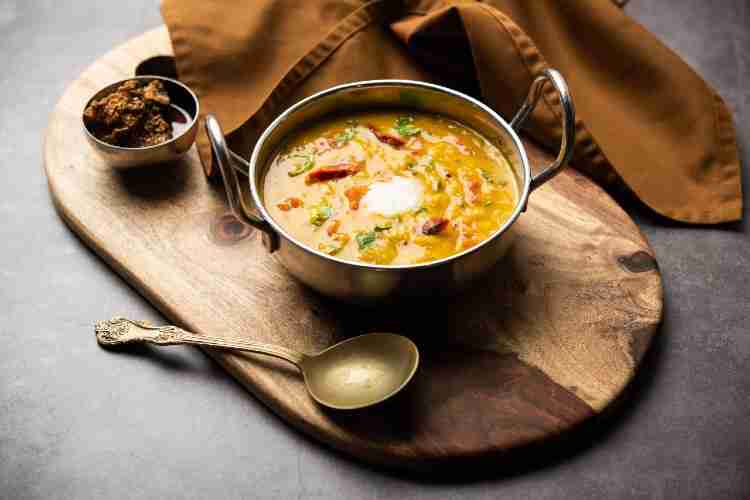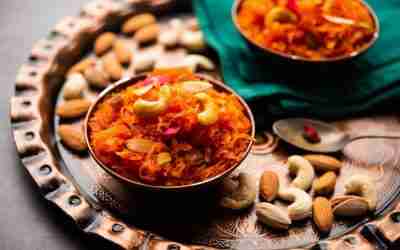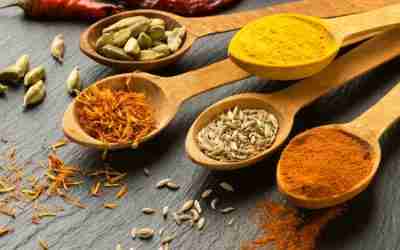Dals (pulses) are an integral part of every Indian meal. They are a major source of proteins for vegetarians. There are more than a dozen types of dals and many more ways they can be prepared. Each dal has its unique taste and nutritional profile, which can provide a whole range of health benefits.
In this article, you will learn about the nutritional values of different types of dals. Take advantage of this information, order your next dal dish from Mealawe and enjoy a nutritious meal with your family.
Split chana dal (Bengal gram dal)
This dal has a slightly nutty flavor and is packed with nutrients. It is used to make dals, soup, curries, snacks, soup, and flour.
It has high fiber and protein content. Since it has a low glycemic index, it is excellent for those at risk of diabetes. Besides B complex vitamins like B1, B2, B3, and B9, it also contains zinc and calcium.
It strengthens bones and helps reduce the risk of heart disease by lowering cholesterol.
One serving (100 grams) of cooked chana dal contains 90.45 calories.
Also Read: The Science Behind Indian Thali
Toor dal (Pigeon peas)
Toor dal is known by different names all over India. It is also called Arhar dal, Rahri Dal, Tuvar dal, Kandulu, and Thuvara Parippa. In addition to being used to prepare dal for the main meal, it is also used to make dal halwa and paruppa vada.
Besides proteins, carbohydrates, and fiber, this dal also contains vitamins B, C, E, and K and minerals like potassium, magnesium, and zinc.
It helps maintain healthy metabolism and stabilizes blood pressure. It is also good for heart and bone health.
One serving (100 grams) of cooked Toor dal contains 151 calories.
Split yellow moong dal
Moong dal is one of the most commonly used dal in Indian households. It is used to make khichdi, salads, and stuffed paranthas.
It is rich in folate, which helps to produce and maintain cells. Flavonoids present in moong dal help to lower inflammation. It also contains magnesium which helps to build immunity. It also is a good source of phosphorus.
This dal is low in calories and fat and rich in protein and fiber. It is also a rich source of B vitamins, which are essential for metabolism.
One serving (100 grams) of yellow moong dal contains 116 calories.
Masoor dal
While the split variant of this dal comes in shades of orange, yellow, or pink, the unsplit Masoor dal is brown.
Masoor dal is a good source of vitamins A, C, and E, which are essential for healthy eyesight. Its high calcium and phosphorus content makes regular consumption of this dal good for bones and teeth. Masoor dal is excellent for anemic and pregnant women as it is iron-rich.
One serving (100 grams) of split masoor dal contains 147 calories.
Whole black urad dal
This dal is popular all over the country. It is used to make dal makhani, a popular north Indian dish, while in the south, the split version of this dal is used to make dosa, vada, and papad.
Urad dal is rich in dietary fiber, isoflavones, and vitamin B complex. It improves digestion, boosts energy, improves skin health, and promotes heart health. The antioxidants in this dal also help to reduce pain and inflammation in the body.
One serving (100 grams) of whole black urad dal contains 191 calories.
Rajma (red kidney beans)
Rajma originally came to India from Central America but is now a popular dish all over India. The varieties of rajma grown in India include red rajma, black rajma, Kashmiri rajma, whate rajma, and chitra rajma.
Rajma has a low glycemic index and contains lean proteins, some carbs, and very little fat. It is rich in amino acids like arginine and leucine, which help to control insulin levels. Consuming rajma regularly can also help lower high blood pressure and cholesterol levels.
One serving (100 grams) of boiled rajma contains 140 calories.
Kabuli chana (Chick peas)
Kabuli chana is an all-time favorite of the young and the old. It’s called chhole in Punjab, Kondaikadali in Tamil, Kadale in Kannada, Sanagalu in Telugu, and Kadala in Malayalam.
These chana are an excellent source of fiber, folate, manganese, and tryptophan and provide nutrients like iron, phosphorus, copper, and protein.
The high fiber content helps in reducing cholesterol and improving digestion. Kabuli chana also contains phytochemicals like saponins that have antioxidant effects.
One serving (100 grams) of Kabuli chana contains 164 calories.
Final thoughts
A single serving of dal can provide a variety of nutrients like protein, iron, potassium, zinc, and several vitamins. A bowl of dal with your meal can give you proper nutrition and the energy that you need. With all the health benefits and goodness that dals provide, aren’t you tempted to choose from the dal options available at Mealawe?




